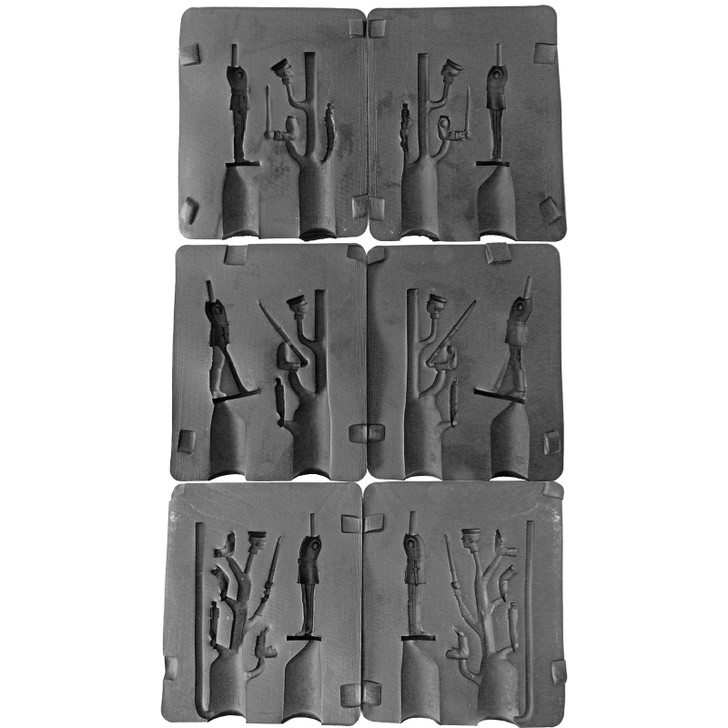This is a box set containing three durable black rubber moulds that cast 54mm scale fully round metal miniatures of toy soldiers.
The great European powers dominated the world in the period of 1900 to 1914 and this mould set includes U.S.A line infantry from the Post 1902 era. These are parade ground uniforms.
Between the end of the civil war in 1865 and the outbreak of the Spanish-American war of 1898, the U.S. army faced no external enemies and its army was accordingly very small and used in most part to protect settlers and westward moving pioneers against hostile Native American tribes. After victory over Spain in 1898 however, the U.S. inherited what remained of the Spanish empire in the Philippines and the army was expanded accordingly, though it was still extremely small compared to those of its European counterparts.
The country’s puritan roots were reflected in the utilitarian uniforms, which were simple and unadorned compared with those of the other Great powers of the time. Both cavalry and infantry wore dark blue coats for dress uniform, double breasted for officers and single for other ranks. They all wore light blue trousers, with a wide white stripe for infantry and a yellow stripe for cavalry. Branches of service were distinguished by coloured bars on the cuffs. Belts were black leather for other ranks and enameled black with gold lace for officers. Prior to 1902 a pickelhaube style helmet with an American eagle badge was worn but this was replaced after that date with a field cap. Belts for other ranks were also of brown leather for other ranks after 1902.
These moulds are suitable for casting in all three alloys, if you use the Prince August Solder Pot to aid you. You can also find the Digital Thermometer very useful for making sure you have the metal at the right temperature.
There are 2.5mm PTFE rods (PA2077) included to allow you to make the neck hole to attach the head later. Just place the small rods in the body cavity where the head would be after you have applied the talcum powder and before assembling the mould. Take it out after casting and keep safe for reuse. If you loose the PTFE rod, more are available online.
Assembly of the casted figures is required so you may wish to acquire some superglue suitable for metal. Scratch the areas a little in a crosshatch pattern before attaching to give more grip for the glue.
Colours for painting these uniforms are recommended as follows:
Uniforms: White (70951), Gloss Black (70861), Dark Prussian Blue (70899), Black (70950), Leather Brown (70871), Brass (70801), Sky Blue (70961).
This product is not suitable for children under the age of 14.











